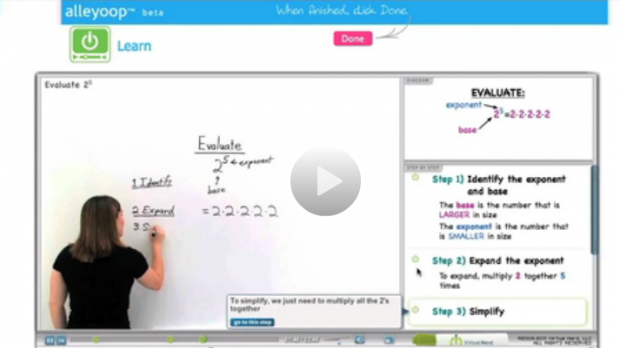By Jennie Rose
Alleyoop, the online college prep tutoring site created by Pearson, has added a group of new STEM-focused partners to its offerings. In addition to its current math programs, Alleyoop has added NASA eClips, National Geographic, Scientific Minds, Patrick JMT, Virtual Nerd, Adaptive Curriculum and Brightstorm.
Alleyoop uses the "gamification" model for its curriculum, which is targeted at middle- and high-school students. The site features real-time tutors, instructional videos, and a system described as "personalized, iterative, and adaptive," according to an Atlantic article.
With these new additions, students who use Alleyoop will have access to NASA eClips, a video library showing STEM-related careers and applications for science and engineering concepts; videos from National Geographic that are aligned to STEM topics, such as animal behavior and chemistry; National Science Foundation's Science360 app, a source for science news, as well as a series of video interviews of scientists and engineers on the field.
Other partners in Alleyoop's online curriculum offerings include Brightstorm, video lessons created by teachers covering biology, chemistry and physics; Adaptive Curriculum, featuring interactive scenarios that give students context for science lessons across the board; Patrick JMT, video activities including geometry, trigonometry to statistics and probability; Scientific Minds, quizzes and interactive biology flashcards; and Virtual Nerd, interactive whiteboard tutorials in math and physics.
The site, which has more than 30,000 beta users, was designed to be used outside school, unlike other tutoring sites, like Civitas Learning. Alleyoop users earn ‘Yoops’ for the work they do on the site, and can put those earned points towards different activities. For $12 a month, a user can gain access to premium content, such as guidance help or career advice.


